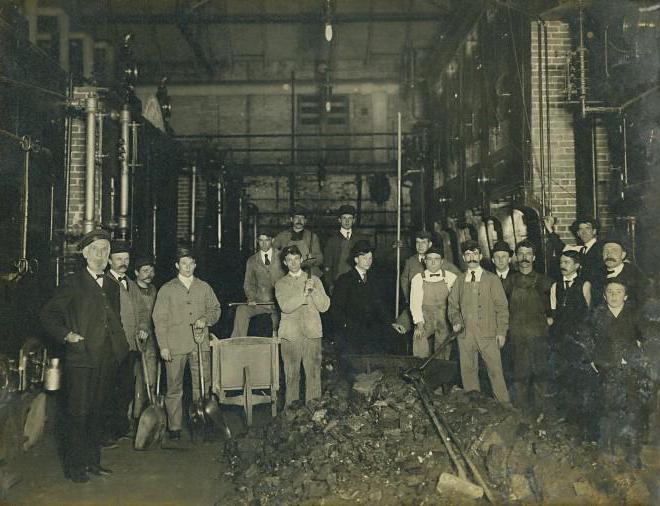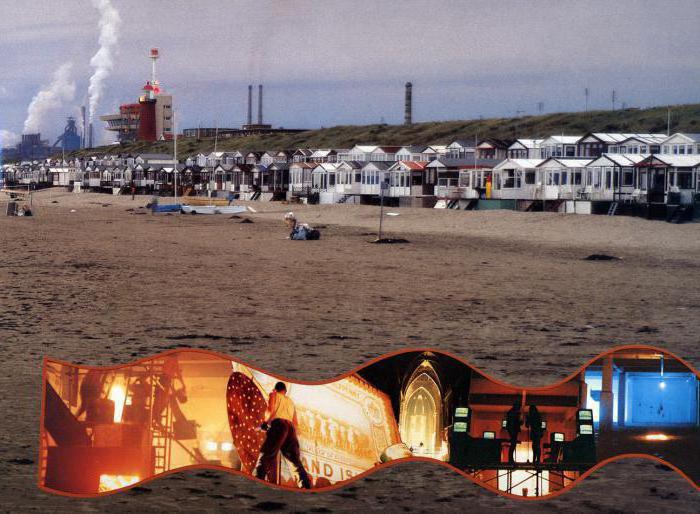In the modern world, a peculiar system of studying the development of human society is adopted. According to her, mankind has gone through two stages - traditional and industrial. At the present stage, the world is at the stage of post-industrial society. Each stage of development is characterized by certain signs. The characteristic features of a post-industrial society we can observe in real life.
The first step in the development of society - what is it?
Thousands of years have passed since the advent of mankind. People spent most of this journey on the steps of a traditional, or agrarian (another name for pre-industrial) society.
This stage is characterized by a traditional way of life and underdeveloped social structures. Even the little things in life are painted according to prevailing rules. A huge role in the regulation of public life is played by religion and customs. The army and the church are the basis for maintaining the social structure.
Important for everyone human value stands the earth, as well as a group of people to which he is attributed to the fact of birth. The peasant remains so until the end of his days and transfers his status to his sons and grandchildren. Banishment from the village becomes a difficult test. It is impossible to feed oneself and the family without land.

The main producer of the products necessary for human life is nature. More than 90% of the population is engaged in agriculture. The family makes products for themselves from the starting point to the final result. There is no division of labor; new production methods are encountered negatively or are prohibited by traditions.
If we compare with the formation approach to studying the history of Karl Marx, then, according to his teaching, can be attributed to traditional society three formations: primitive communal, slaveholding and feudal.
What is the second stage of development of society?
At the turn of the sixteenth to seventeenth centuries, there is a gradual transition of countries to a new stage of development. Industrial society first made itself known in Holland and England, and then led other countries of the world.
A special feature of the new stage was the development of industrial production. Agriculture could no longer be dealt with. Trade appears, so it was possible to purchase food products by exchanging them for items of their own production. Land ceases to be the most important value, since industry becomes the basis of the economies of countries. Capital is gaining ever greater value.

The transition from manual hard labor to machine labor, replacing the physical strength of man, was a revolutionary event. New cities appear and grow, the position of man in society is changing. His connections with the group are weakening; he can easily change his status throughout his life, ascending or descending the social ladder. Now it doesn’t matter by whom and where you were born, a person’s life depends on everyone’s personal achievements. Getting your corporation or company to maximize revenue is a critical goal.
The third stage of development of society
The model of industrial society, due to its focus on the introduction of the latest inventions, could not remain unchanged. Therefore, countries from the industrial stage quickly enough make the transition to a new stage - post-industrial society.
The first to propose a new name for social development was Daniel Bell in his work “The Coming Post-Industrial Society”. There, the scientist predicted an approximate period of such a transition - the beginning of the twenty-first century.

Post-industrial society - This is the third stage in the development of society, characterized by its informatization, combination of scientific and technical achievements, improving the quality of medical care and the education of people. The described features of a post-industrial society become the basis for improving the quality of human life.
Reasons for moving to a new stage
The transition to a higher stage of development of society is due to a number of factors. Moreover, supporters of various schools believe that the main features of a post-industrial society appeared for various reasons.
Proponents of industrial theory distinguish the following reasons:
- The reduction in the required number of workers in material production occurs as a result of mechanization, subsequent automation of production, and also due to the modernization of technology.
- The described changes present the employee with higher educational requirements.
- Getting an education turns into a universally accepted value.
- Educated people want to receive quality goods and services.
- Only qualified specialists can provide quality services or goods.

Marxists argue that the characteristic features of a post-industrial society appeared as a result of the division of labor. This applies to a separate enterprise (some produce, others advertise, others distribute), and transnational corporations. It becomes profitable to produce goods in adapted regions in order, for example, to reduce transportation costs. An enterprise may be located in one country and an office in another. Another reason: a change in the structure of consumption. Demands for services are growing faster than for goods. Services, unlike production, are usually tied to a place. A cook from Washington will not go to feed the inhabitants of a distant state; he needs his professional there. The productivity of an individual worker in production can be increased through the use of technology, in the service sector this is unattainable. The surgeon cannot simultaneously perform two to three to four operations; additional working arms are required. Therefore, an increasing number of employees are employed specifically in the service sector.
Transition to a post-industrial society
To make the transition to a higher stage of development, it is necessary that signs of a post-industrial society appear in society. Their appearance was promoted by factors of economic and social development.
- Changes in the country's economy are beginning. The manufacture of goods is gradually giving way to the production of information and services. Low qualifications of workers are being supplanted by highly qualified specialists.
- Social structure ceases to be based on class division. It is replaced by strata that take into account not only the level of income, but primarily the level of knowledge and education, the prestige of the profession.
- The main structure is the university as a unit combining theoretical knowledge and mass production, and having the desire to obtain new knowledge.
Distinctive features of post-industrial society
What are they like? A higher stage of social development is characterized by signs of a post-industrial type of society, which replace obsolete ones. The paramount feature is the emergence of computer technology production. It is based on generating income and profit through the use of existing knowledge and information. The use of high technologies, based on the conservation of resources and the use of the latest scientific achievements, leads to the appearance of still unknown production lines.These are already recognized biotechnology and robotics today. More advanced technologies will come in the future. Informatization is being introduced into every sphere of human life: from housekeeping to state administration.

The second feature is an exceptional feature inherent in post-industrial society. In no previous step did she play such a role. This is an increase in the importance, role and place of the human factor. There is a transition from the predominance of physical or mechanical labor to mental. A person learns all his life, enterprises do not skimp on the costs of professional development and training of employees. Individualization of needs leads to the rejection of standards in production. Small-batch consignments of goods, their modification predominate more and more, the demand for intangible goods and services is growing.
The signs of a post-industrial society include the greening of economic development. Man understands the importance of nature for his own existence and abandons the role of “king of nature”. The holistic development of the system "man-nature", "nature-society" is designed to solve many global problems.
Social principles of post-industrial society
For one hundred percent, no third state in the world has developed the third stage of development of society. But its signs characterize future changes. So, what are the signs of a post-industrial society in the social sphere?
The principle of majority will disappear. It will be replaced by a sign of protection of minority rights. The current state in politics, the social sphere, culture, when the minority cannot live as he wants, but is forced to adapt to the leading majority, is gradually becoming obsolete. Small groups are gradually gaining more and more opportunities to realize their own priorities, rather than those of others. This applies to small nations, small political parties, directions in culture and so on. Today, the protection of minority rights is met with resistance from the leadership majority. Large parties rule the country in politics, achievements recognized and accepted by many are recognized in culture.

"Semi-direct" democracy will turn into the full content of this combination - "the power of the people." Elected bodies today are guided in making decisions on their own views and on the subjective opinions of experts. Having received a greater load of knowledge using information technology, citizens will no longer passively observe the work of parliamentarians. They will be able to propose their own options for political decisions, influence politicians outside the legislative assemblies. Their opinions will become decisive and take legal force.
Today, decision-making responsibility is unevenly distributed. Most of the responsibility lies with national authorities. International and local levels are minimized. A sign of a post-industrial society is precisely the transfer of part of the responsibility. Transnational associations can more effectively deal with the problems of the fight against terrorism, the suppression of drug trafficking and others. Local structures are able to solve issues of economic, national character and other spheres of life of the population living there.
Economic change
The completeness of the characteristics will not be achieved without listing the changes in the economic sphere. First of all, signs of the development of post-industrial society are manifested in this side of society. A qualitative change in the economic structure of the state is expressed in the transfer of the prevailing role to the tertiary sector. The first two (agriculture, industry) cease to develop without the active participation of the third component.
An integral third element is the service sector.The introduction in agriculture and industry of mechanisms that replace the physical efforts of an employee invariably leads to the transfer of vacant workers to other areas of activity. The tertiary sector is communications and transport, trade and tourism, leisure, health and more.
Modern economists talk about the emergence of the Quaternary sector. Free workers are also sent here. The quaternary sector consists of education, the media, financial services, planning and management, science.
Common features and features of the second and third stages
Signs of industrial and post-industrial society flow from one another and contradict each other. The basis of industrial society is the industrial production of goods, the main value of which is ownership of capital. Private ownership of objects of production predominates, the most numerous class is the class of workers (proletariat), which is led by the class of the bourgeoisie. In politics, representative democracy is considered the main achievement.
In a post-industrial society, all development is based on the possession of knowledge (information) and the ability to use it. The economy is based on stock ownership. The massive transition from industry leads to an increase in the number of employees (managers). Management of production, the country is impossible without the coordination of the interests of various forces through direct democracy.
Which of the signs characterizes a post-industrial society more accurately? It seems to have knowledge. Indeed, in addition to the name “postindustrial”, this stage of development of society is also called other epithets: informational, virtual, computer, posteconomic.
Countries with postindustrial society
Postindustrial society is characterized by a predominance of the tertiary sector in the economy. At the present stage, these countries include: USA, Canada, Germany, the Netherlands, Great Britain, Japan, Singapore, South Korea, Israel.
In these countries, about a third of the working population is employed in the creative sphere. To think creatively, to solve problems outside the box, to go ahead and lead - such requirements are imposed on public figures and scientists, journalists and engineers, artists and writers.

Which of the signs characterizes the post-industrial society today? Information has become the most popular and valuable product, which is being introduced and prevails in all areas of human life without exception.






